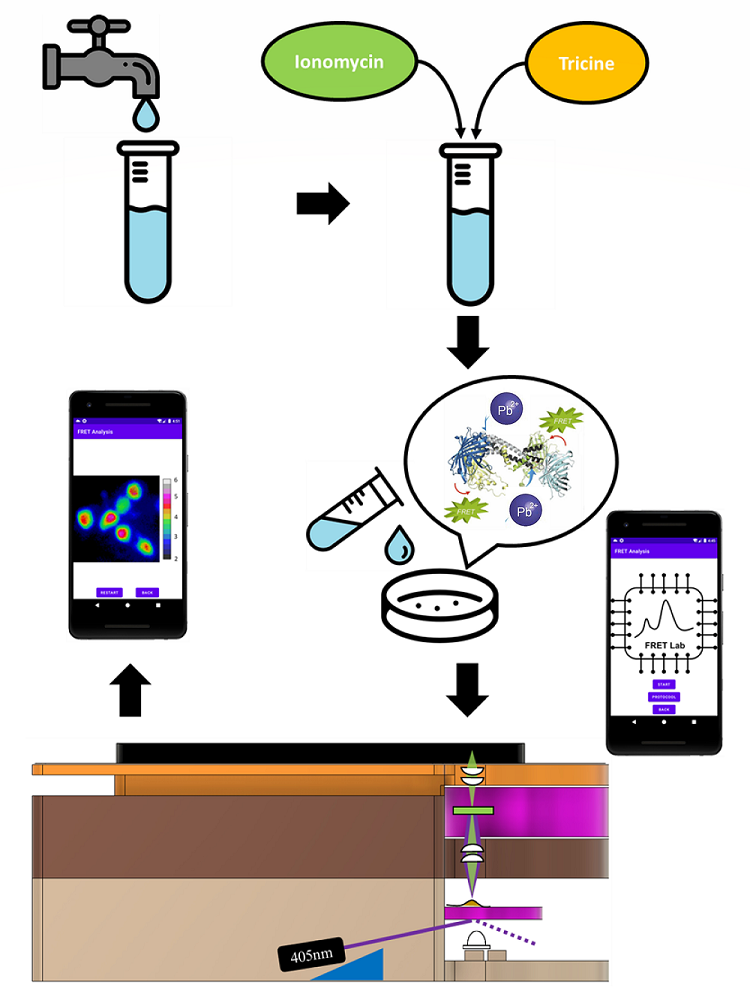Most methods for measuring environmental lead (Pb) content are time consuming, expensive, hazardous, and restricted to specific analytical systems. To provide a facile, safe tool to detect Pb, we created pMet-lead, a portable fluorescence resonance energy transfer (FRET)-based Pb biosensor. pMet-lead comprises a 3D-printed frame housing a 405-nm laser diode — an excitation source for fluorescence emission images (YFP and CFP) — accompanied by optical filters, a customized sample holder with a Met-lead 1.44 M1 (the most recent version)-embedded biochip, and an optical lens aligned for smartphone compatibility. Measuring the emission ratios (Y/C) of the FRET component enables Pb detection with a dynamic range of nearly 2 (1.96), pMet-lead/Pb dissociation constant (Kd) 45.62 nM, and limit of detection 40 nM (0.832 μg/dL, 8.32 ppb). To mitigate earlier problems with lack of selectivity for Pb vs. zinc, we preincubated samples with tricine, a low-affinity zinc chelator. We validated pMet-lead measurements of characterized laboratory samples and unknown samples from six regions in Taiwan by inductively coupled plasma mass spectrometry (ICP-MS). Notably, two unknowns had Y/C ratios significantly higher than that of the control (3.48 ± 0.08 and 3.74 ± 0.12 vs. 2.79 ± 0.02), along with Pb concentrations (10.6 ppb and 15.24 ppb) above the WHO-permitted level of 10 ppb in tap water, while the rest four unknowns showing no detectable Pb upon ICP-MS. These results demonstrate that pMet-lead provides a rapid, sensitive means for on-site Pb detection in water from the environment and in living/drinking supply systems to prevent potential Pb poisoning.

